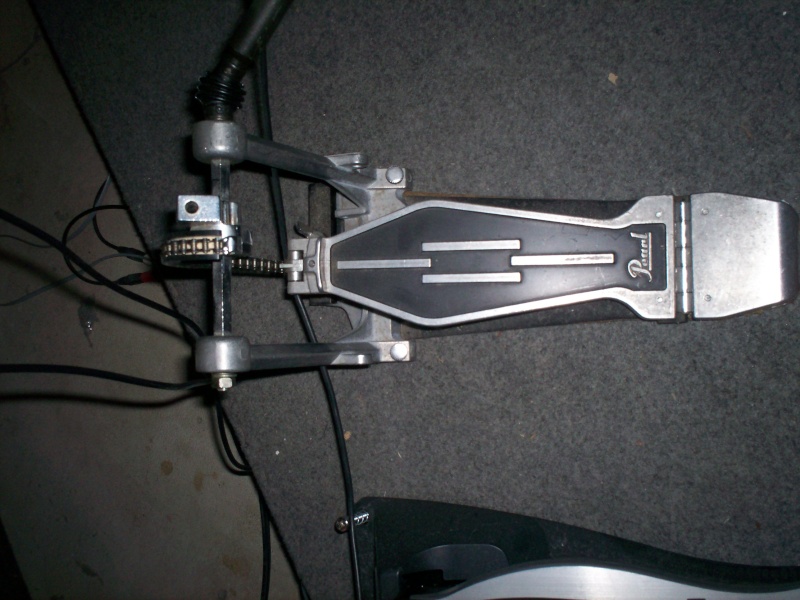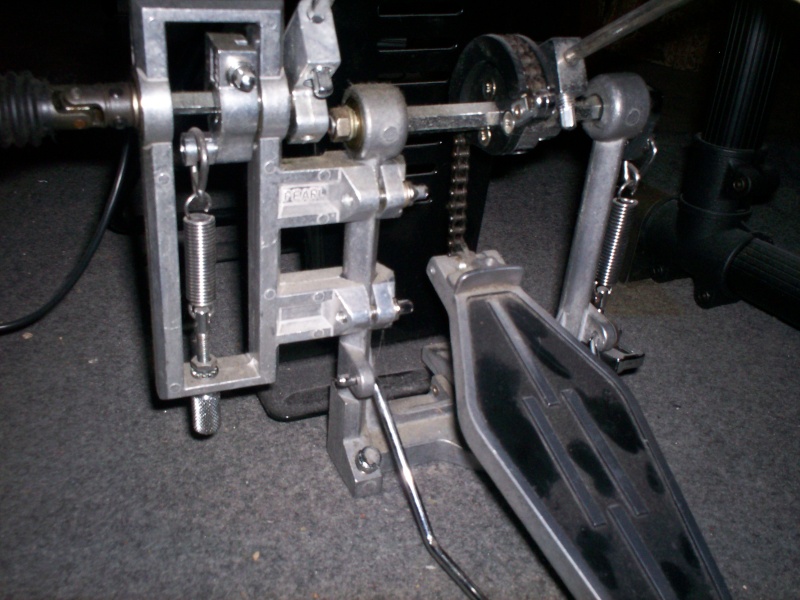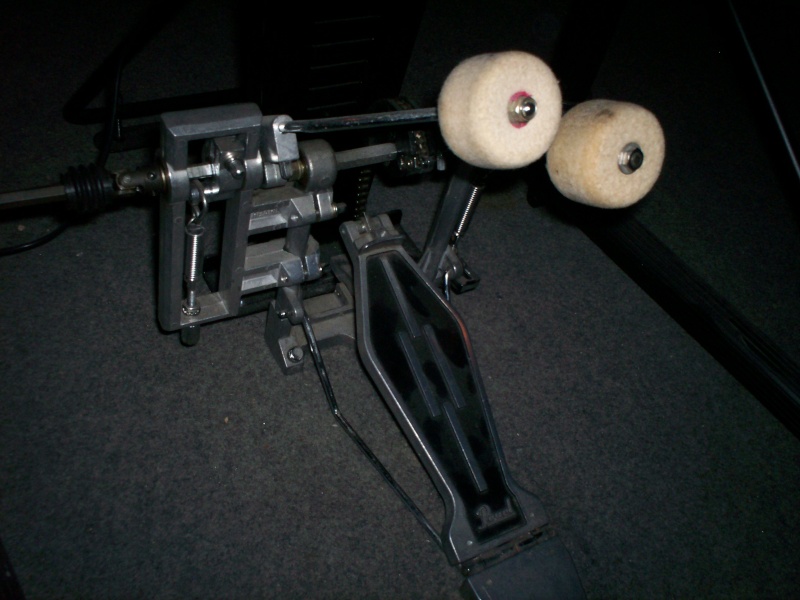
This photo shows the end-result of retro-fit. You can
see the 'bigfoot' or 'longboard', now. Only the foot-
board was changed but now, we have so much more
control over it than before, with the old heel-plate etc.
Before leaving this photo, you can see the screw that
holds the beater is on the inside and that is something
of a hassle, if you do not have a long shafted key. I
have no idea why they decided on this. That does not
make any sense to me. Oh, well.

This shows you the old heel-plate, which was changed
from and note that there are no screws on the top. If
you have this one and want to alter it, you can do it,
without changing the entire base. Otherwise, you must
change all of it.

This one shows the screws on the bottom, which are
concerned for the retro-fitting.

Another view, from the bottom of the screws. You can
see the two screws used for the longboard.

This is important, as it shows the Allen-screws that can
be loosened, allowing for the pedal to be moved away
or towards the hoop/kick-drum. This also allows for
unusual responsive action, with beater angles set at
greater than 90-degrees.

This shows you the pull-down lever's three options,
changing the height of the foot-board but there is more
to this than meets the eye. That lower one seems like
it's not needed to me but you should try it to see for
yourself if you like/need it. The top one can get really
radical, if you have set the cam at my settings.
Trick isolates this feature, emphasizing its significance
in determining the length of the stroke. This is absol-
utely true. What I have found, however, is that the
footboard adjustment made, here, changes the
action MORE than that made by just simply moving
up and down the cluster. In other words, these are
not independent adjustments that are being made.

This will refer to the hoop-clamp, which was mentioned
earlier in the thread and a good point was made. It
really does clamp down hard. To get by this, if you are
concerned about it, adhese a rubber membrane to
the clamp OR the hoop to protect it.

Here is the radical dial-settings that I recommend. It
is not something that you would go for, according to
their recommended range (Look closely). At the stores,
you will likely find the dial around 0 to +1. You want
to experiment with this aspect of the pedal and NOT
the spring tension. That's not the signature.
Here, at my settings, the pedal is actually pushing
back at you, when you are about to make contact
with the head, creating an unusual spring-type of
action, allowing for easier multiple strokes.
http://thediametrixletter.com/trick1.mp3

This picture shows something of an issue, when you
setting the dial at my recommended setting. You must
make sure that you are not hitting the hoop-clamp,
below. It is worth moving it back further but only
as needed as the further away the pedal is from the
head contact, the better. We want slightly more than
a 90-degree beater angle, at contact. Try working
at 92 or 93-degrees and if there is too much against
you, knock down the spring tension.

This shows the lever's angle, at 90-degrees.

The Detonator is telescopic and a great innovation,
allowing full beater contact, whether the beater is
at 90-degrees or not BUT if that edge hits your shin,
it will gash it open and so...

...You can use a pencil-eraser to cap it for protection. But
better yet, go to your neighborhood hardware store and
pick up a package of National Door-Stop Tips.
The product number is: N181-404 V23OT
Last edited by Admin (Pete) on Tue May 20, 2008 10:13 pm; edited 1 time in total

 Home
Home


